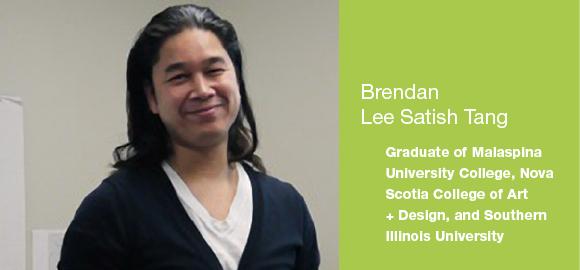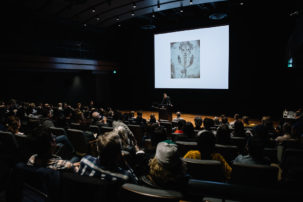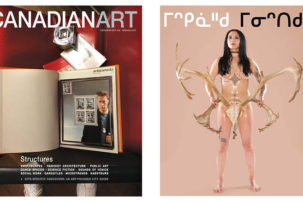Brendan Lee Satish Tang has gained renown in recent years for his unique ceramic sculptures, which blend influences ranging from manga to Ming.
In 2010, he was a finalist for the prestigious Sobey Art Award, and his work has been shown at major public galleries across the country, including the Vancouver Art Gallery, the Gardiner Museum and the Southern Alberta Art Gallery.
Interestingly, given Tang’s excellence in the three-dimensional realm, some may be surprised to find out he started his studies in painting and drawing, rather than ceramics or sculpture.
“My introduction to art was at first very focused on two-dimensional practices, such as painting and drawing,” he says in the Winter 2012 issue of Canadian Art. “But I was always attracted to the three-dimensional because it was immersive: immersive for me, as an artist, and immersive for the viewer.”
The move into ceramics came a bit later; as he describes it, “My decision to work with ceramics was kinesthetic—working with clay satiated me on a physical level in a way I hadn’t experienced with other media.”
Tang’s art-college years took him far and wide. He began his studies with a diploma in the visual fine arts atMalaspina University College in Nanaimo in the mid-1990s. From there, he pursued an interdisciplinary bachelor of the visual fine arts at the Nova Scotia College of Art and Design in Halifax. In the early and mid 2000s he completed a master of fine arts in studio arts at Southern Illinois University.
“Art school helped to expose me to a variety of media, but, most importantly, it prepared me to think about context: what it means to make art now and in the future,” he says. “A visual-arts degree is in many ways a critical thinking degree. It prepares you to talk about working in a visual format.”
Since art school, Tang has taught at Thompson Rivers University in Kamloops and Red Deer College, among other sites. He has also lectured at venues including Eretz Israel Museum in Tel Aviv and theUniversity of Lethbridge.
Wherever he goes next, Tang will continue to explore what he considers to be sculpture’s special quality.
“I liked [in art school] that the encounter with a sculptural object took place in the same space that the viewer occupies,” he notes. “It seemed to have a magical, transporting power.”
Compiled with information from Canadian Art‘s Winter 2012 issue

 Image provided courtesy of Brendan Lee Satish Tang
Image provided courtesy of Brendan Lee Satish Tang







